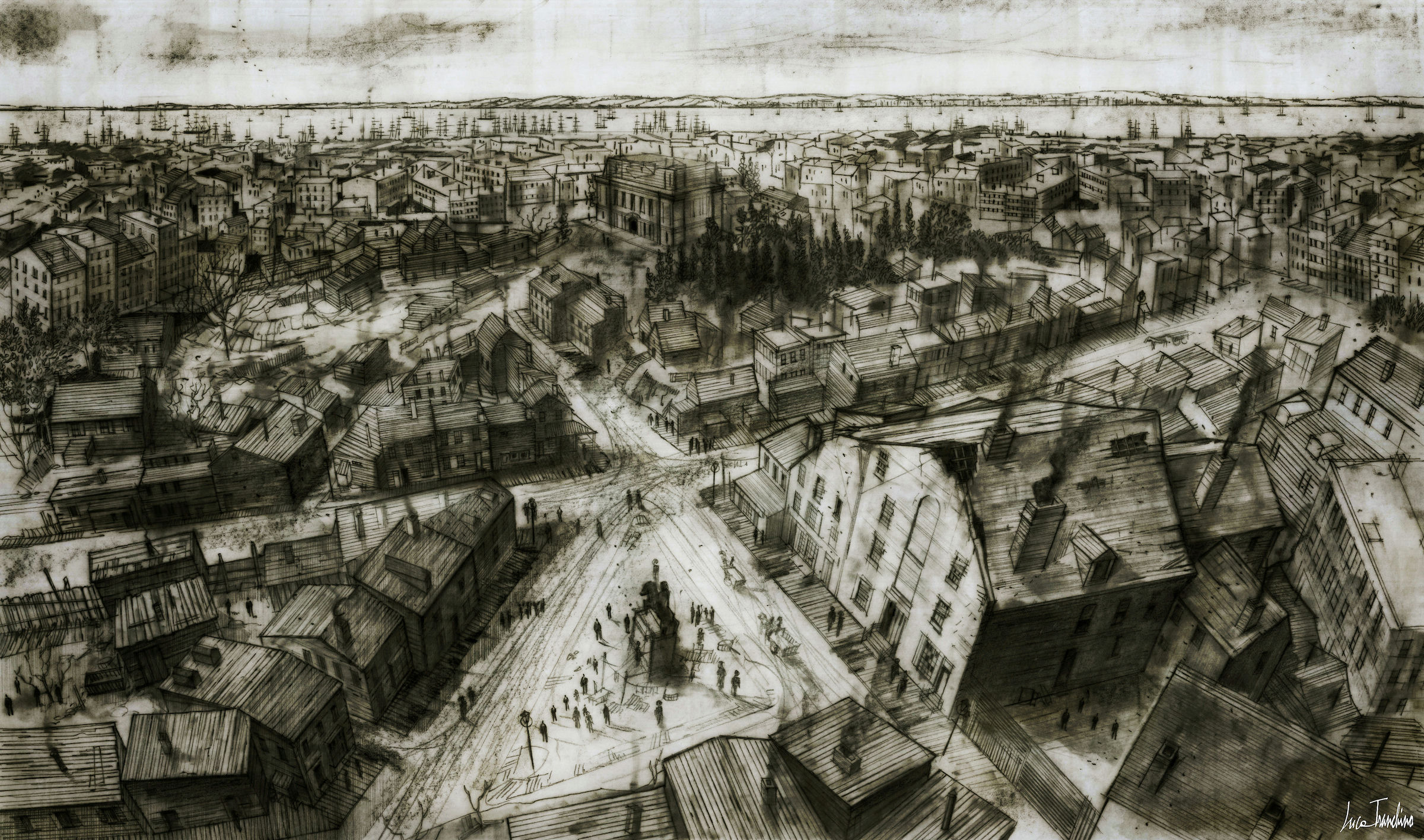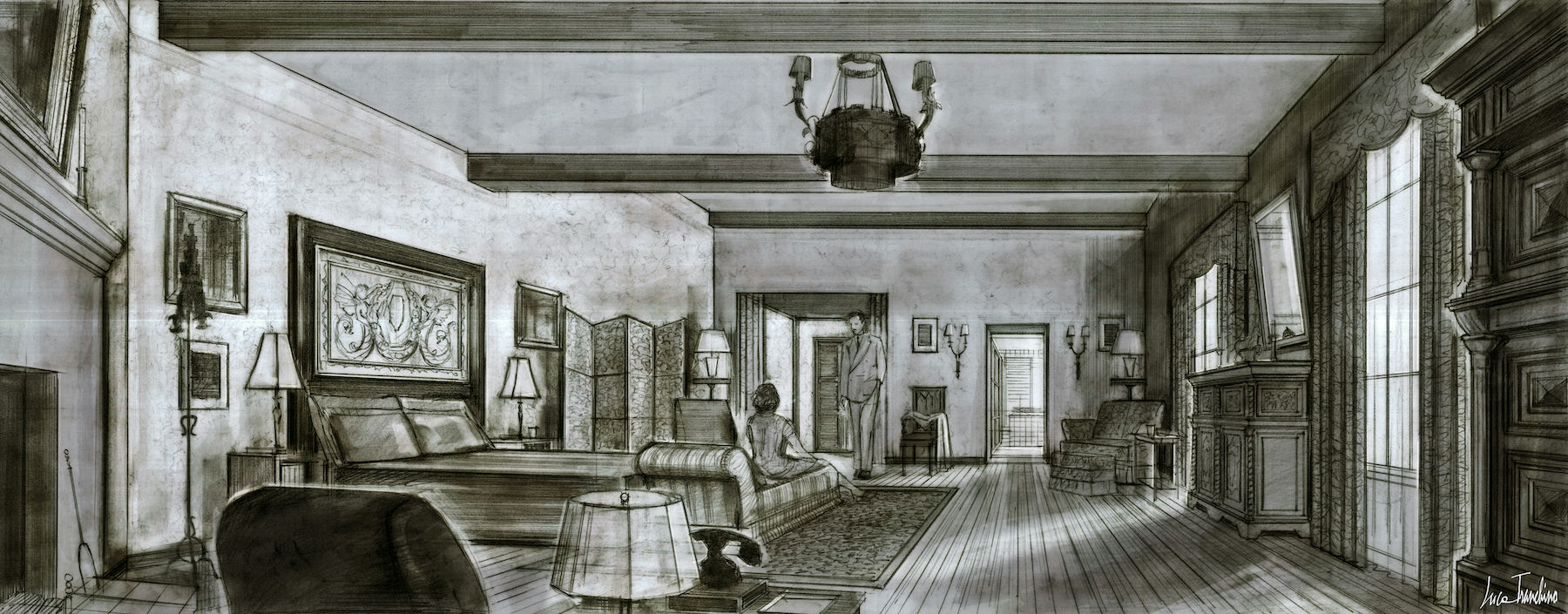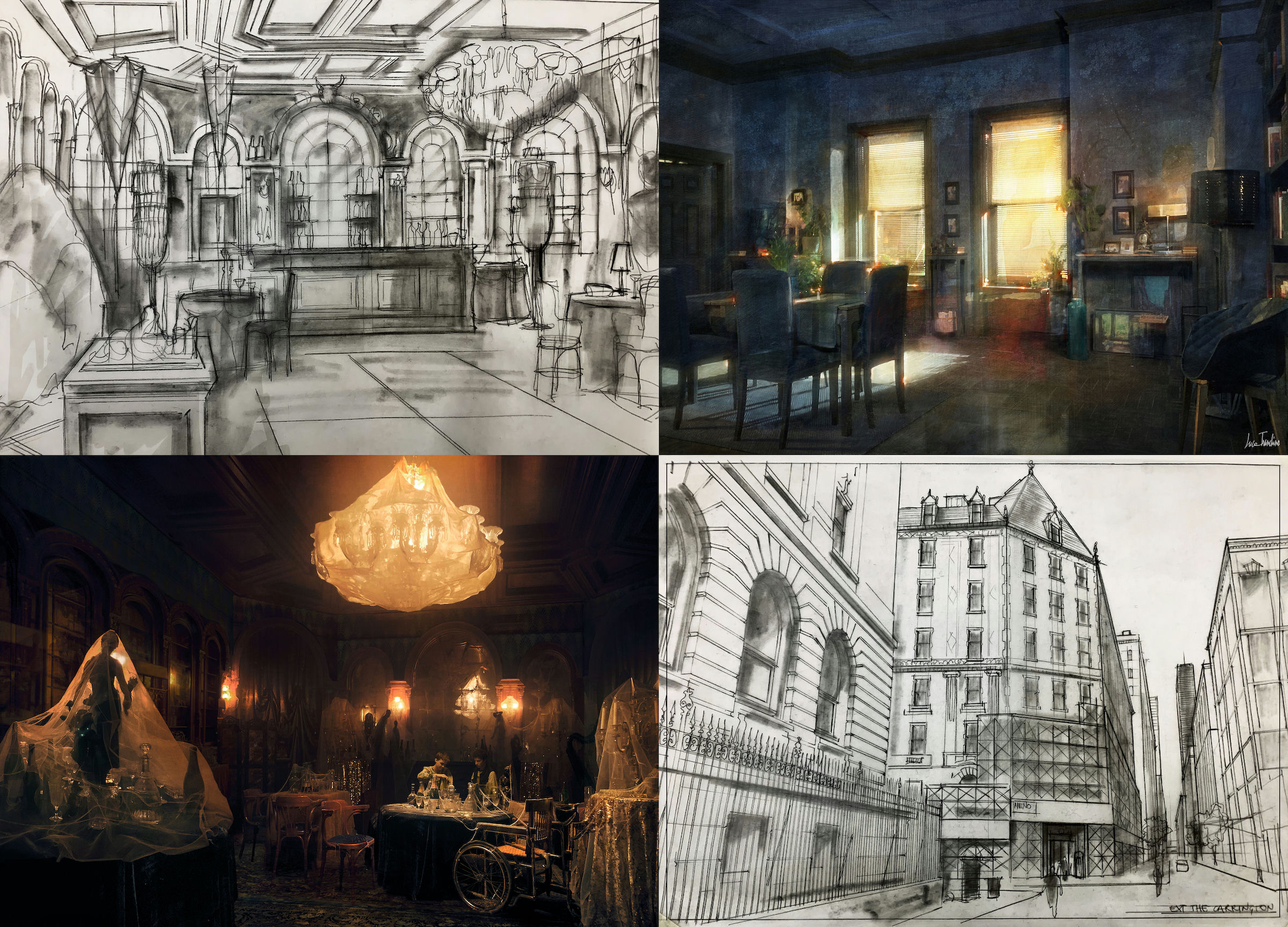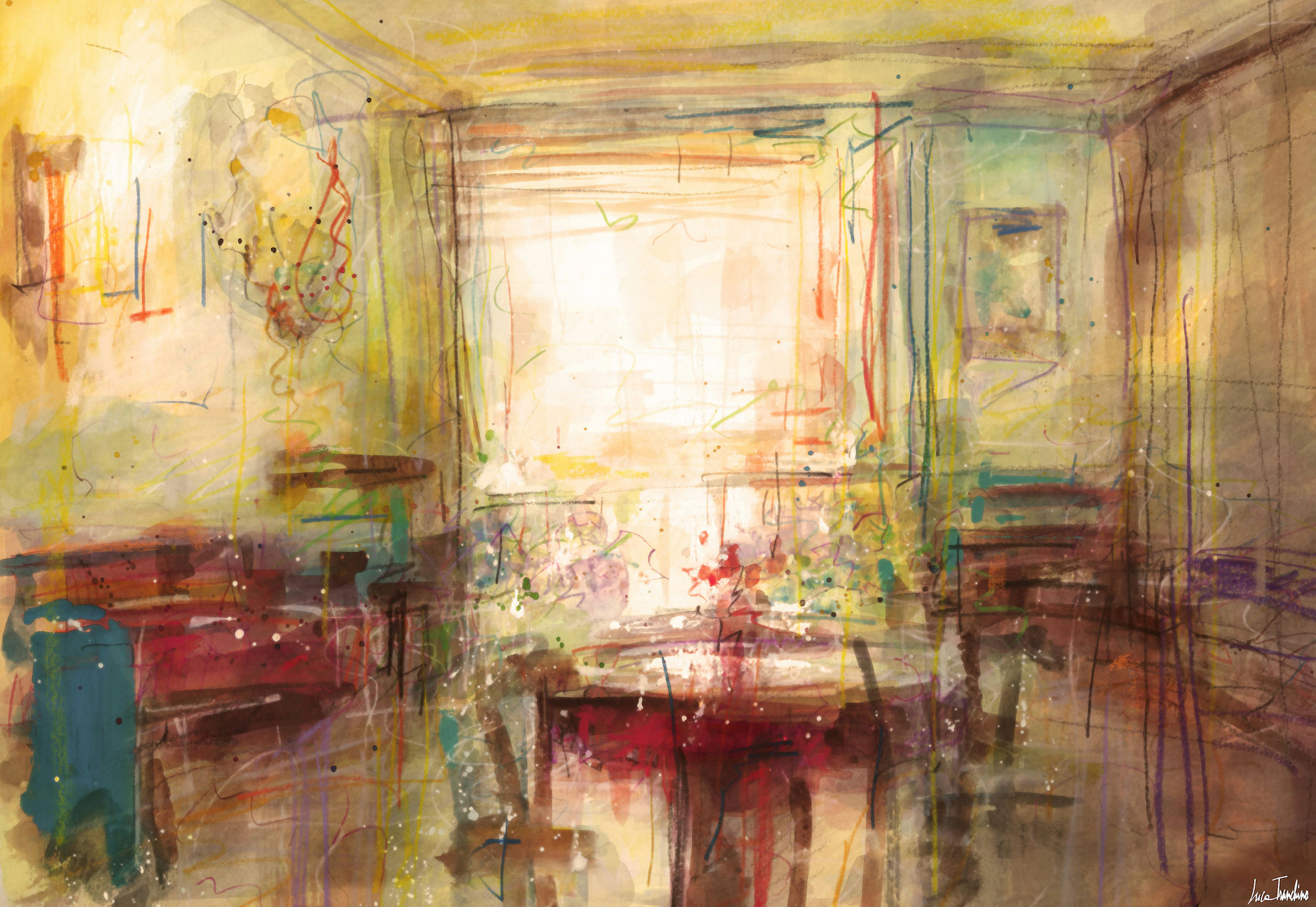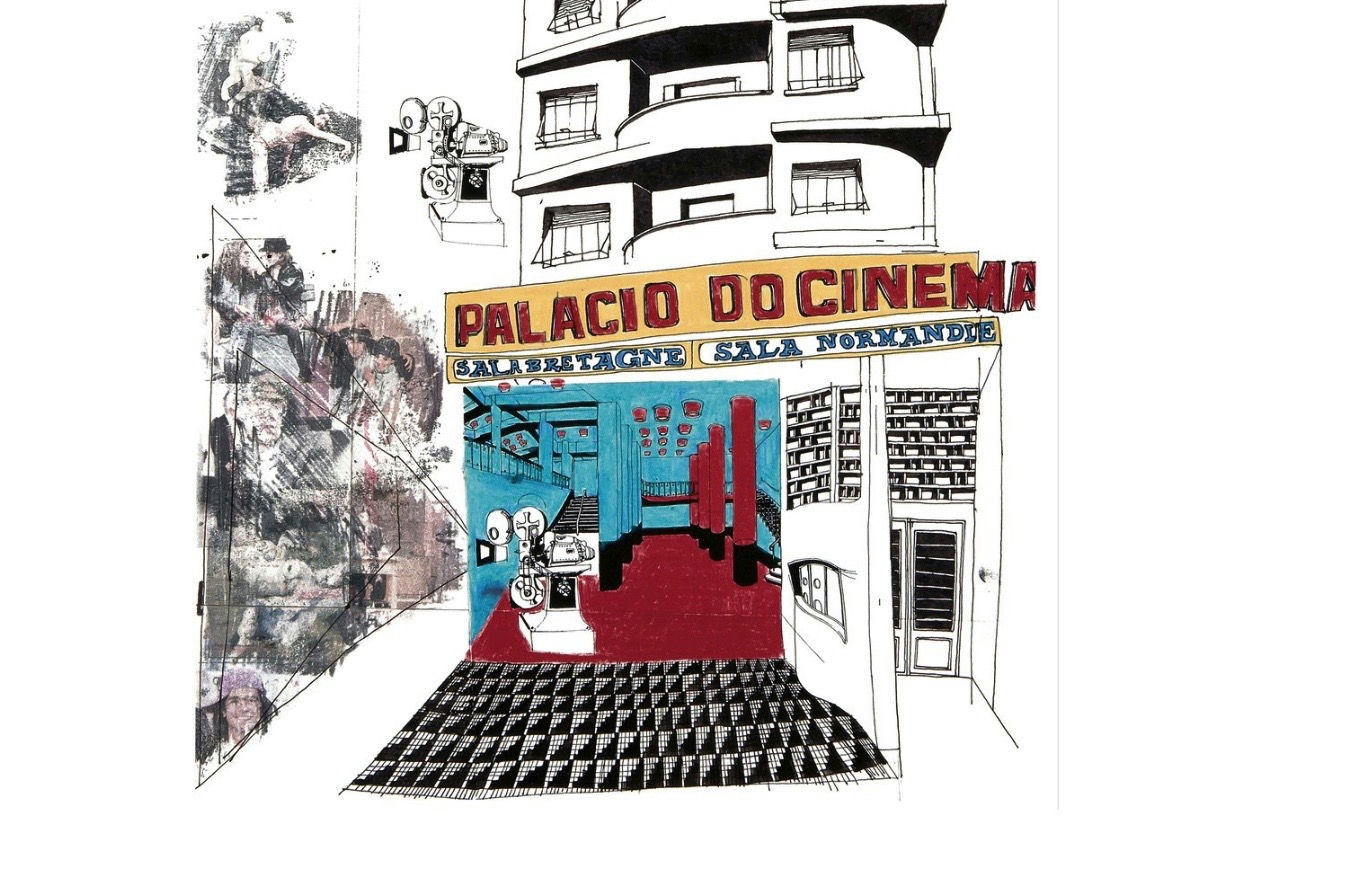
When I started working in the movie business, drawing by hand was the main option. Throughout the years of my collaboration with Dante Ferretti, I have been lucky to practice in many different areas of the design process. I was often making sketches and illustrations, but also technical drawings, models, supervising the Set constructions, gathering references and research, reviewing scripts, and so on. Dante generally makes a lot of large scale sketches as well, with a technique that could almost be reminiscent of Caravaggio’s way of painting: Starting on a dark background (normally in the tones of browns and blacks), he usually outlines with colored chalks and pastel pencils, essentially what is hit by the light. This method is very effective, but most of all, forces you to concentrate on the light sources and the overall atmosphere and mood.
When I worked on Martin Scorsese’s "The Aviator", I had to make a lot of pencil sketches, before the Sets where built, where I could also try and visualize the set dressing pieces that Francesca Lo Schiavo, with her crew, was collecting meanwhile. Today, using a 3D model, it is easy to quickly visualize any side of a Set in development, but if you are spending the time to draw it by hand, I think you will be much more careful on the best angles to propose. it’s not about the beauty of the drawing, but more about being in control of the proportions and understanding a space.
The practice of making hand-drawn technical drawings is unfortunately slowly disappearing. However, I think that working on a drawing that is physically in front of you, on a drafting table, will always give you more control and focus on the project than mainly looking at it through a computer screen. Drafting by hand enables you to concentrate in a specific order, depending on the scale, starting from the overall idea, from the essence, and later on, to developing the details at the right moment. A handmade drawing is definitely more expressive, emphasizing some lines more than others, communicating a feeling of material, texture, lighting, and the general mood of it, especially if dealing with historical architecture.
Now that I work as a Production Designer, for some reasons, preparation time has become generally much shorter. Often producers seem to feel safer setting a lot of production meetings during the week; there is a lot of talking, and, at the end, not a lot of time left to work. So, I started sketching faster, in a concise way, focusing on what is mostly important, and on what I want to achieve with a certain Set.
Sometimes I have been lucky to hire some great concept artist, that could do illustrations for me; but, no matter how rough and imperfect a quick handmade sketch can be, I think it’s still a very efficient way to communicate an idea. Sometimes my sketches have become even more abstract end evanescent; made mostly of colors and light. I think that the quality of imperfection is uniquely human and gives it life, because we are ultimately trying to express a mental state of a moment, a memory, an emotion.




